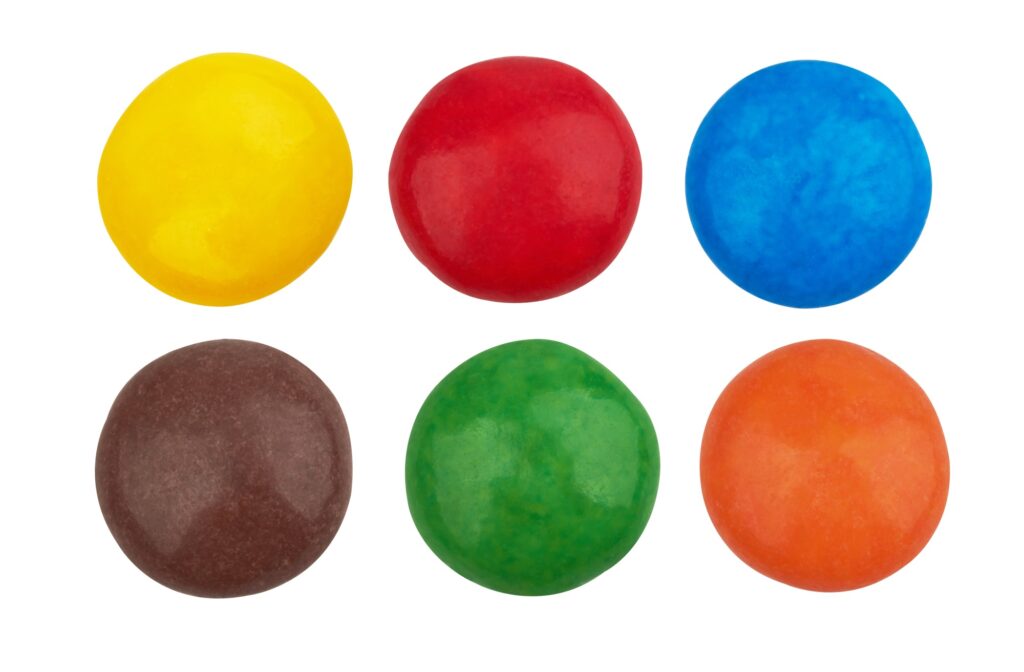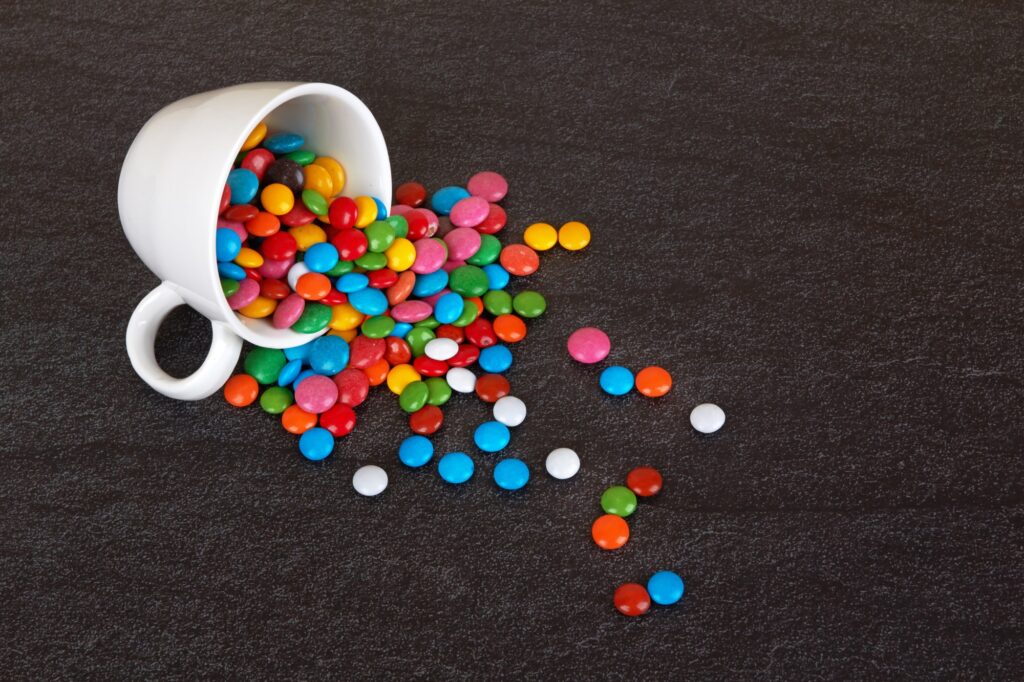Understanding Tooth Anatomy: What M&Ms Teach Us About Dental Health – Root Canal Explanation
Ever wonder what your teeth are really made of? Here’s a sweet analogy for you: your tooth is like a peanut M&M! That’s right—something as simple as candy can help us better understand the complex layers of our teeth. Dr. Pedersen of Love to Smile Dentistry in Overland Park has a knack for breaking down complex dental concepts, and in this case, she’s drawn on a popular snack to explain tooth anatomy in a way that’s easy to understand and even fun.
So, grab a bag of peanut M&Ms (for educational purposes, of course) and let’s dive into the anatomy of your teeth—and why each layer matters for your oral health!
The Enamel: The Candy Coating
The outermost layer of your tooth is the enamel. Much like the shiny candy shell on an M&M, your enamel is tough and durable—it’s actually the hardest substance in your body. Its job is to protect the inner layers of your teeth from everything you throw at it, whether it’s crunchy snacks, hot coffee, or ice-cold drinks.
But here’s the catch: unlike that candy shell, enamel doesn’t regenerate once it’s lost. That’s why good oral hygiene and regular visits to your dentist at Love to Smile Dentistry are so crucial. The enamel is your tooth’s first line of defense against decay, so keeping it intact is key to long-term oral health.
The Dentin: The Chocolate Layer
Just beneath the enamel is the dentin, which is comparable to the milk chocolate layer in a peanut M&M. Dentin is softer than enamel and has tiny microscopic tubules that lead directly to the nerve of the tooth. When your enamel wears away or is damaged, these tubules can become exposed, causing sensitivity to hot, cold, or sweet foods.
Dr. Pedersen emphasizes that once dentin becomes exposed, it’s a signal that your teeth need extra care. This is why treating cavities early, before they reach the dentin, can save you from discomfort and more complex dental procedures. Regular cleanings and fluoride treatments can help keep this layer healthy and strong!
The Pulp: The Peanut at the Center
At the core of the tooth lies the pulp, where the nerves and blood vessels reside. This is the “peanut” of your tooth, and it plays a vital role in keeping the tooth alive and healthy. The pulp delivers nutrients and oxygen to the tooth and helps it respond to external stimuli.
When the pulp becomes inflamed or infected, that’s when you might need a root canal to save the tooth. During the procedure, the damaged or infected pulp is removed, but the structural integrity of the tooth is preserved. (Want to know more? Check out our root canal services at Love to Smile Dentistry!)
Why Protecting the Pulp Matters
If the pulp becomes compromised—whether by deep decay, trauma, or a cracked tooth—it can lead to severe pain and even abscesses. By taking good care of the outer layers of your teeth, you’re also protecting the vital pulp inside. That’s why preventative care, like sealants and regular cleanings, is so important.
How Tooth Layers Work Together
Each layer of your tooth has its own role to play, but they work together as a team to keep your mouth healthy. The enamel protects the dentin, and the dentin cushions the pulp. When one layer is compromised, the entire system can be thrown off balance, leading to discomfort and the need for treatment.
Dr. Pedersen stresses the importance of proactive dental care: “If we can catch issues early, we can preserve the natural structure of your tooth and prevent more invasive procedures later on. Prevention is always better than cure.”
Practical Tips to Keep Your Tooth Layers Healthy
Want to keep every layer of your tooth in top condition? Here are some practical tips from Dr. Pedersen at Love to Smile Dentistry:
- Brush Twice a Day: Use a fluoride toothpaste to strengthen enamel and remove plaque buildup.
- Floss Daily: This removes debris and bacteria from between your teeth, protecting the enamel and gums.
- Limit Sugary Snacks: Sugar fuels the bacteria that cause cavities, which can eat through enamel and reach the dentin.
- Visit Your Dentist Regularly: Schedule cleanings and exams to catch issues before they become serious. You can book an appointment here.

Why Love to Smile Dentistry Is Your Partner in Oral Health
At Love to Smile Dentistry in Overland Park, Dr. Pedersen and her team are passionate about helping you maintain healthy teeth, layer by layer. Whether you need preventative care, restorative treatments, or just some friendly advice, they’re here to guide you every step of the way.
If you have questions about tooth anatomy or need to schedule your next dental visit, don’t hesitate to reach out to us. We’d love to help you protect your enamel, dentin, and pulp for years to come!
FAQs About Tooth Anatomy
What is tooth enamel made of?
Tooth enamel is primarily made of hydroxyapatite, a hard mineral composed of calcium and phosphate. It’s the hardest substance in the human body.
Can enamel be repaired once it’s damaged?
No, enamel cannot regenerate. However, fluoride treatments and dental sealants can help strengthen existing enamel and protect it from further damage.
Why do my teeth feel sensitive to hot and cold?
Sensitivity to temperature is often caused by exposed dentin. This can happen if the enamel wears away or if your gums recede, exposing the roots of your teeth.
What happens if the pulp of a tooth gets infected?
If the pulp becomes infected, it can lead to severe pain and abscesses. A root canal is often needed to remove the infected pulp and save the tooth.
How can I protect my tooth layers?
Brush twice a day with fluoride toothpaste, floss daily, and schedule regular cleanings with your dentist. Avoid sugary foods and drinks, which can erode enamel and cause decay.
How often should I visit the dentist?
It’s recommended to visit your dentist every six months for cleanings and exams. However, your dentist may suggest more frequent visits based on your oral health needs.
Ready to Protect Your Smile?
Your teeth are complex, but caring for them doesn’t have to be. At Love to Smile Dentistry, we make it easy to keep every layer of your teeth healthy. To learn more about our services, visit our Services Page, or Contact Us today to book your appointment. Let’s keep that enamel strong, the dentin happy, and the pulp thriving!
;)
